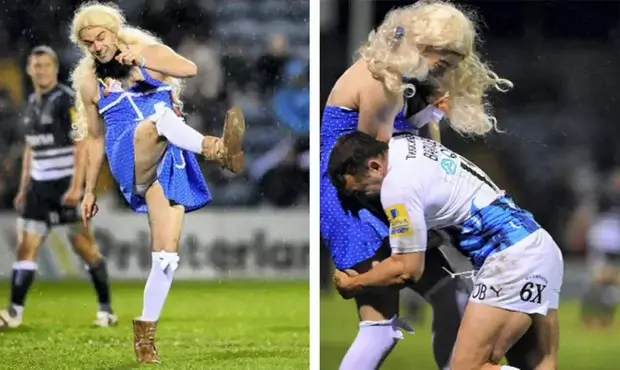Hello, I’m GoldyLocks, and welcome to Wednesday’s Rugby News. Big huzzahs to Chuck and Matt for sorting the log on issues that have been plaguing us as much as the Kiwis winning the Bledisloe, well, maybe not that bad, but definitely annoying. Enjoy!Here we are, halfway between yet another Bledisloe drubbing and yet another chance for redemption. While it’s hard sometimes to feel anything other than the overwhelming, nearly-all blackness of despair (and the injuries haven’t helped), I’ve sensed a faint but persistent note of positivity in the washup from Saturday evening. Let’s endeavour not to quash it as we work through today’s news:
Hump Day hypothesis
As ParForCourse reported on last week, recent times have seen a renewed focus from Australian media on the issue of chronic traumatic encephalopathy, or CTE. First was an ABC report covering new experimental techniques to diagnose probable cases of CTE in sportspeople, including our very own Topo Rodriguez. While definitive diagnoses can for now only be made via a post-mortem brain examination, the new approaches aim to give patients suffering early signs of the condition some clarity and support by making a probable assessment based on 3D brain imaging. Now just this week we learn mungoball and Queensland legend Wally Lewis has also received a probable diagnosis, with scans showing a significant shrinkage of the brain indicating the presence of the disease. I may not be a scientist, but I would hazard a guess more and more stories like this one, some involving beloved stars of years gone by, will spill out into the public consciousness as our understanding of CTE grows. Most professional football codes across the world have by now implemented at least some sort of head injury protocol, designed in the main to identify serious concussion incidents and remove a player from further activity to allow for sufficient recovery. Yet as CTE research matures, the emerging consensus appears to be that the primary disease driver is the lower-impact but numerous sub-concussive impacts experienced by a player over their entire career. The massive, highlights-worthy crunches of yore do damage to be sure, but the real risk lies in the small incidental head knocks picked up from play to play over a match, over a season, over a lifetime of contact on the pitch. The obvious answer? Reduce the occurrence and frequency of the incidences by reducing the occurrence and frequency of high-acceleration impacts. Removing contact from training is already occurring. Most likely, a reduction in overall playing minutes will also begin to be recommended. But doesn’t this run counter to our prevailing wisdom on rugby development? Much ink has been spilled, enough to sink a thousand paper ships, on the lack of consistent rugby for our professional players in Australia, with the absence of a national third-tier brooking agreement only on the fact that it is desperately needed. Only last year as Eddie’s England toured these shores, unflattering comparisons were made between the trajectories of the two young flyhalves lining up for either side, having less than a year in age between them. As of June this year, Noah Lolesio has accrued 36 Super Rugby caps for the Brumbies, and 12 test appearances with the Wallabies. If we’re generous, we could add 10 caps for the Vikings before he cracked the top side in the ACT. Meanwhile, Marcus Smith has racked up 140 Premiership caps with Harlequins and run out for England in 23 tests. The difference in experience, and therefore maturity and assuredness, was stark – or so the commentary said. And yet, in decades to come young Master Lolesio might prove grateful to have been spared his body and his brain the rigours of a complete elite season, year after year. So, reducing minutes would seem on the face of it to oppose the high-performance interests of not just the Wallabies, but the entire elite rugby ecosystem in this country. The only other option to manage CTE risks I can see would be to radically de-power the game by fundamentally altering the laws and their application, particularly around the tackle and ruck. As my colleague also alluded to, this might see us return to truly being a game for all shapes and sizes. But it cannot be a reversion to the chaotic, free-flowing bloodsport of the amateur era, as glorious as it may have been. My question to you, G&GRs, is what would you see change? As fans, players and former players, and potentially coaches, parents and mentors of future players, how would you address the spectre of CTE and serious questions it will only continue to ask of the game they play in heaven?

